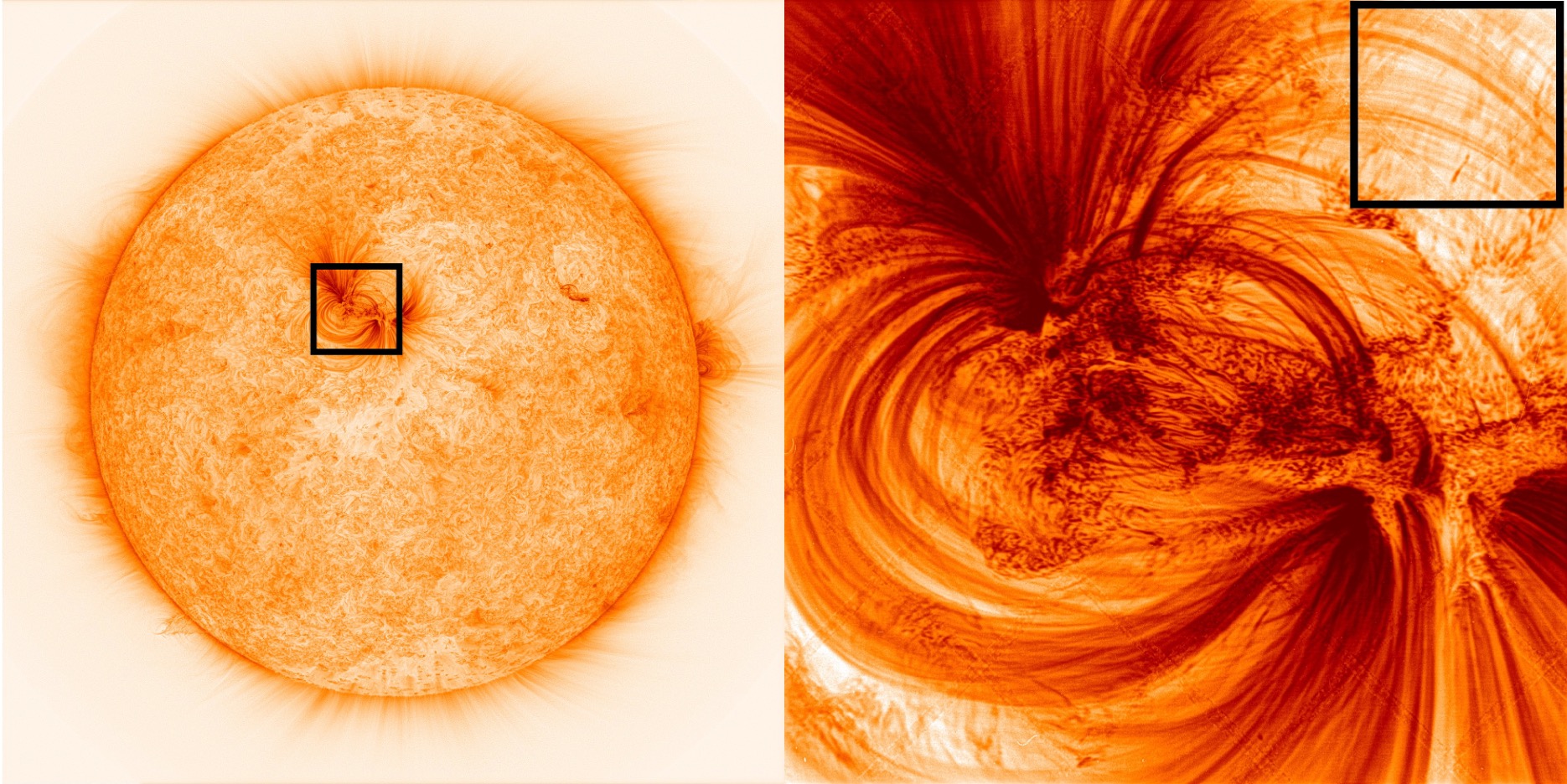Each of these 'tiny' threads of blazing-hot plasma on the sun is 125 miles wide

The closer scientists zoom in on our sun, the more details they see.
The sun, like all stars, is a roiling mass of superhot charged particles called plasma. But it's not the most conducive to close study by puny humans, because of its extreme heat and brightness. As scientists develop techniques to see higher and higher resolution views of the sun, they have wondered whether at some point they will see the sun's intricate structure will disintegrate into a soupy mess.
According to new research, scientists aren't there yet. Researchers obtained the highest-resolution images to date of the sun's corona, or outer atmosphere, using NASA's High-Resolution Coronal Imager, or Hi-C. In those images, scientists were able to identify strands of plasma just 125 miles (200 kilometers) across, according to a NASA statement. (That sounds vast, but remember that the sun is about 865,000 miles, or 1.4 million km across.)
Related: What's inside the sun? A star tour from the inside out
Hi-C gathers data during suborbital flights above the Earth. The new research is based on a flight made on May 29, 2018 aboard a Black Brant IX sounding rocket launched from White Sands Missile Range in New Mexico. The mission was the instrument's third flight and followed a deployment during which the camera's shutter failed to open.
But on the third try, the telescope gathered about 5.5 minutes of data during its 2018 flight. That data focused on a spot on the sun called Active Region 12712. In that region, scientists saw a range of different structure types, including low-emission loops, large loop bundles and open fan loops.
The researchers argue that the display supports the scientific value of developing instruments that would offer such detailed images of the corona for longer periods of time, as other solar observatories do.
Breaking space news, the latest updates on rocket launches, skywatching events and more!
The research is described in a paper published April 7 in the Astrophysical Journal.
- Our sun will never look the same again thanks to two solar probes and one giant telescope
- World's largest solar telescope produces never-before-seen image of our star
- Stunning NASA image lets you watch the sun explode in real time
Email Meghan Bartels at mbartels@space.com or follow her @meghanbartels. Follow us on Twitter @Spacedotcom and on Facebook.
OFFER: Save 45% on 'All About Space' 'How it Works' and 'All About History'!
For a limited time, you can take out a digital subscription to any of our best-selling science magazines for just $2.38 per month, or 45% off the standard price for the first three months.

Meghan is a senior writer at Space.com and has more than five years' experience as a science journalist based in New York City. She joined Space.com in July 2018, with previous writing published in outlets including Newsweek and Audubon. Meghan earned an MA in science journalism from New York University and a BA in classics from Georgetown University, and in her free time she enjoys reading and visiting museums. Follow her on Twitter at @meghanbartels.

